Test and upgrade
As some people know, I buy all the analyzers made in China that are compatible with DL4JAL software (because they will also work with SNASharp).
This way I can verify that it works and also write a SNASharp configuration file for that model.
I bought this analyzer available for a few months. It is indicated as being usable from 10kHz to 40MHz.

At the reception I made this high resolution photography , it is easier for me to zoom on an image to determine the schematic.

I quickly measured a quartz filter, and the results were catastrophic, I deduced that the analyzer did not implement correct impedance matching on his ports.
I then observed the output circuit of the tracking generator, and realized that there was a big design error. The output consists of an OPA695 operational amplifier (with feedback loop) followed by a 3dB attenuator. This configuration can only offer an output impedance around 18 Ohms, far from the expected 50 Ohms .
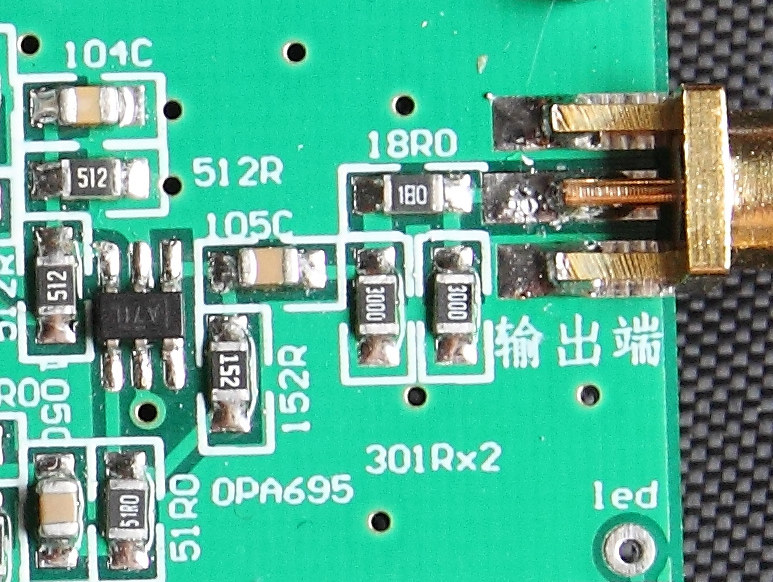
I then observed the input circuit and there too there is a big mistake. We have a 3dB attenuator followed by the input of the logarithmic amplifier AD8307. The AD8307 offers an input impedance of 1100 Ohms, the consequence is that the input port offers an impedance of about 240 Ohms, we are also very far from the expected 50 Ohms.
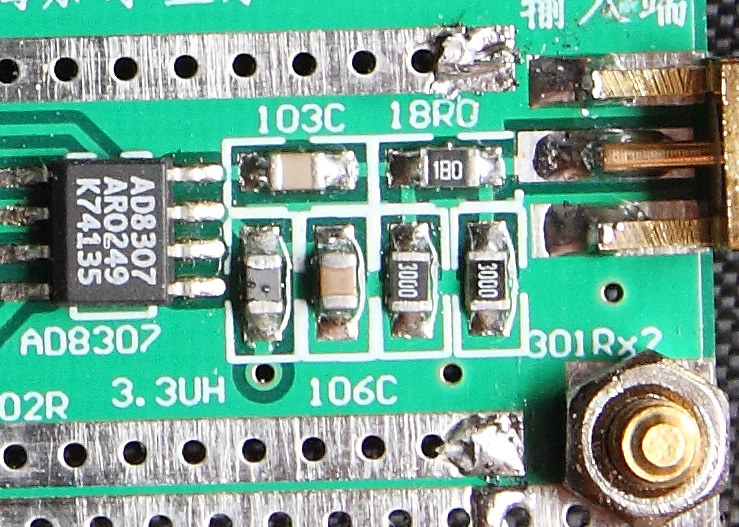
Fixing the issues
For the output it was quite simple, I removed the two 300R attenuator resistors and replaced the 18 Ohms series resistor by a 47 Ohms resistor, so we have an output that offers a ~50 Ohms broadband impedance.

For the input I had to do a little math. I wanted to change the minimum of components, I just replaced the first 300R resistor of the input attenuator by a 62 Ohms resistor. This offers almost 50 Ohms in broadband (49.4 Ohms measured)
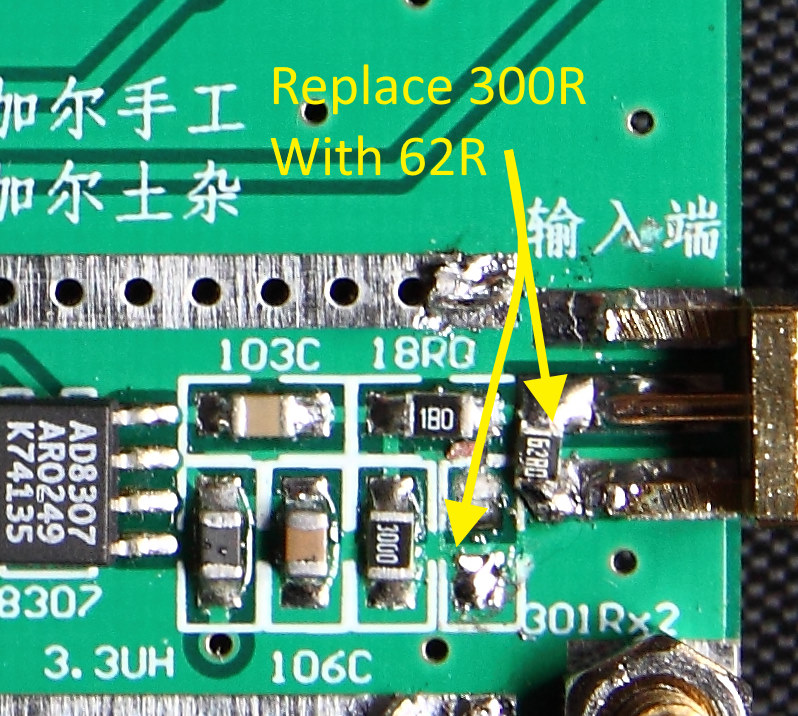
Test and conclusions
Port matching is ok and the analyzer keeps 82dB of dynamic range on the low frequencies and 74dB on the high frequencies, which is very correct.

The linearity is also very good, here up to 60dB.
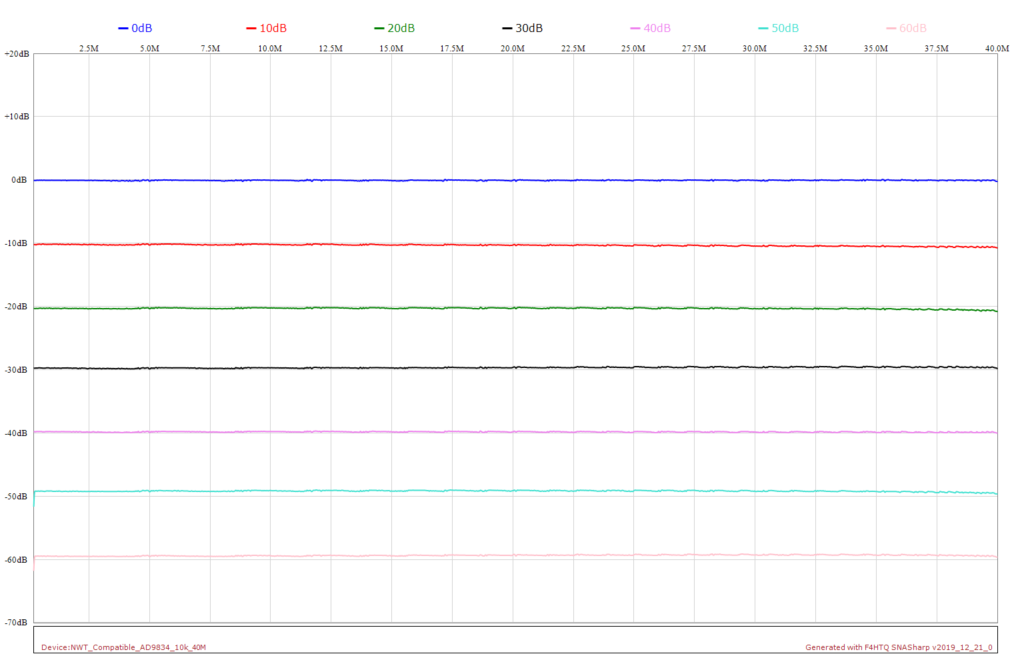
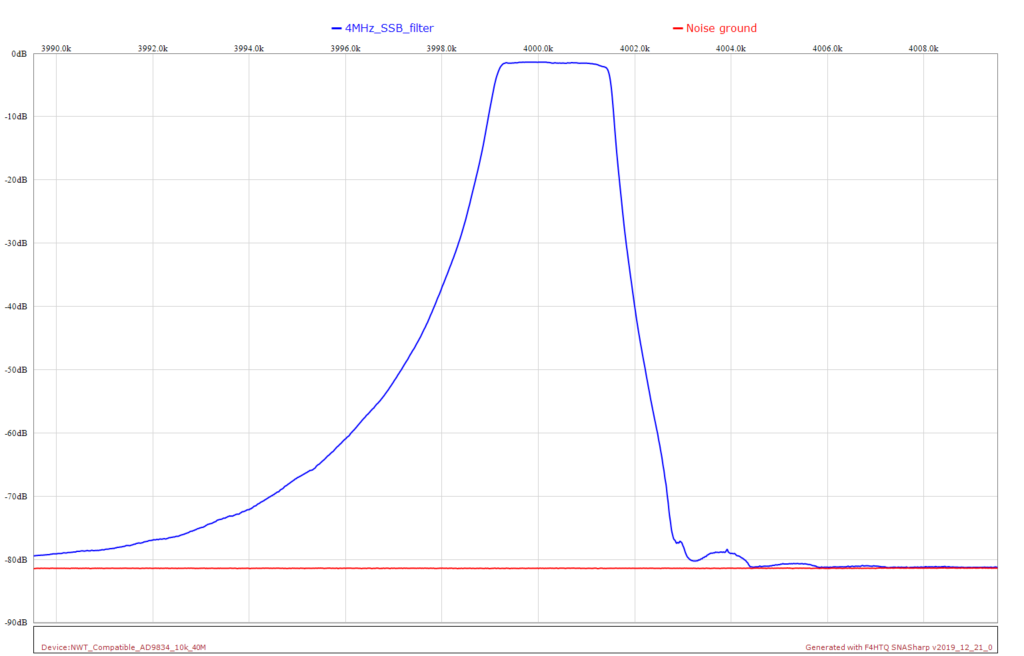

Once modified, this 20€ analyzer is perfectly usable for HF bands. My tests indicated that it could make measurements from 1kHz to 40MHz. The generator provides a fairly clean signal, the harmonics are at -48dBc (H2) and -50dBc (H3).
David, F4HTQ 2021/05/22

Ping : SNASharp v2021_07_03_0 - Dans mon atelier - David F4HTQDans mon atelier – David F4HTQ
Hello David,
I did also some modifications and expand the frequentie on the low side until usable 10KHz. Evenso lower the noise on the lower frequencies.
If someboddy is interesting please let me know so I can sent some pictures and schematics
Forget something:
The frequency is not started as you mentioned at 10 kHz. but started at nearby 45 kHz. as Ali mentioned.
See website; https://nl.aliexpress.com/item/33001550883.html?gatewayAdapt=glo2nld
So I did made some modifications and extended the frequency.